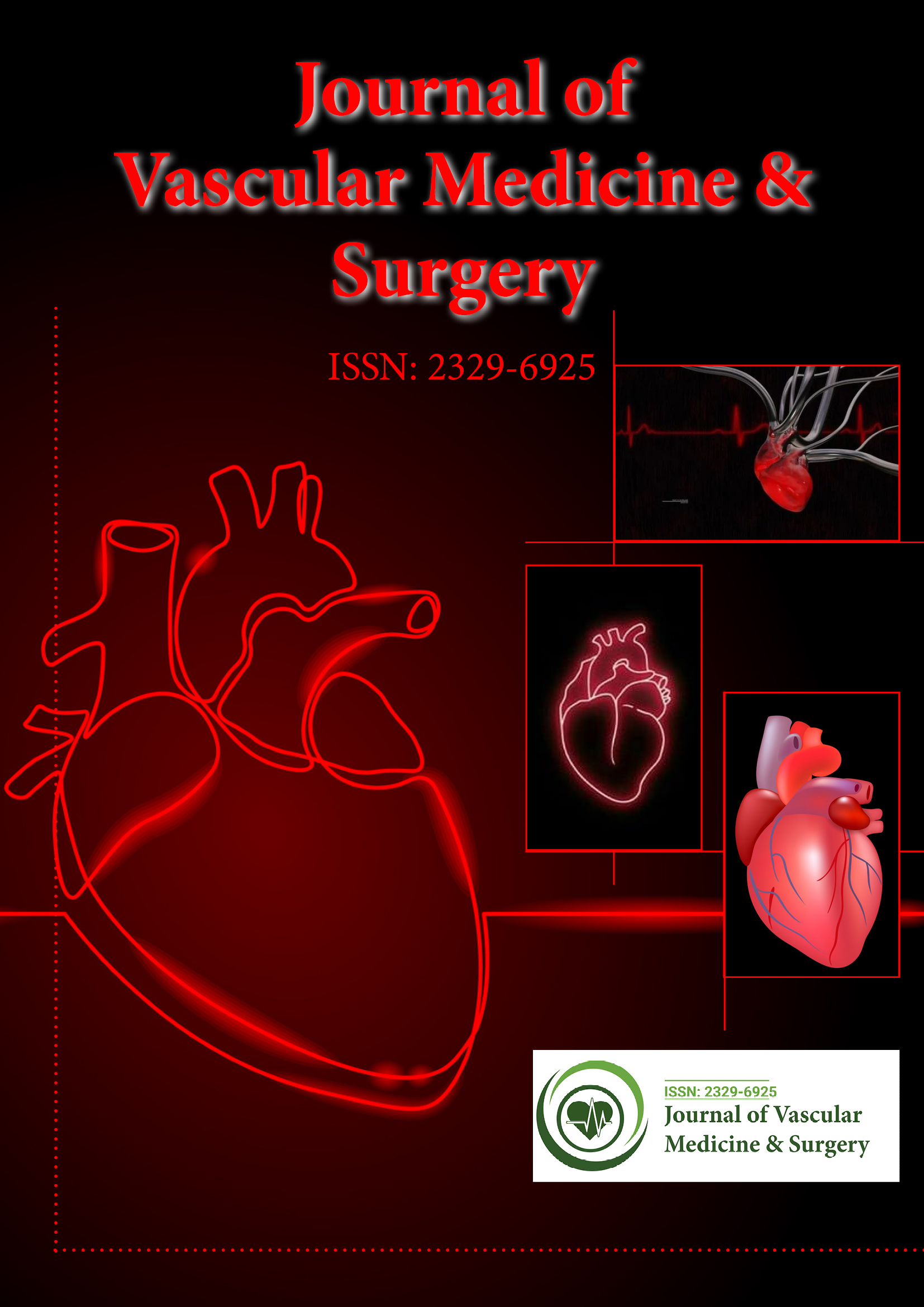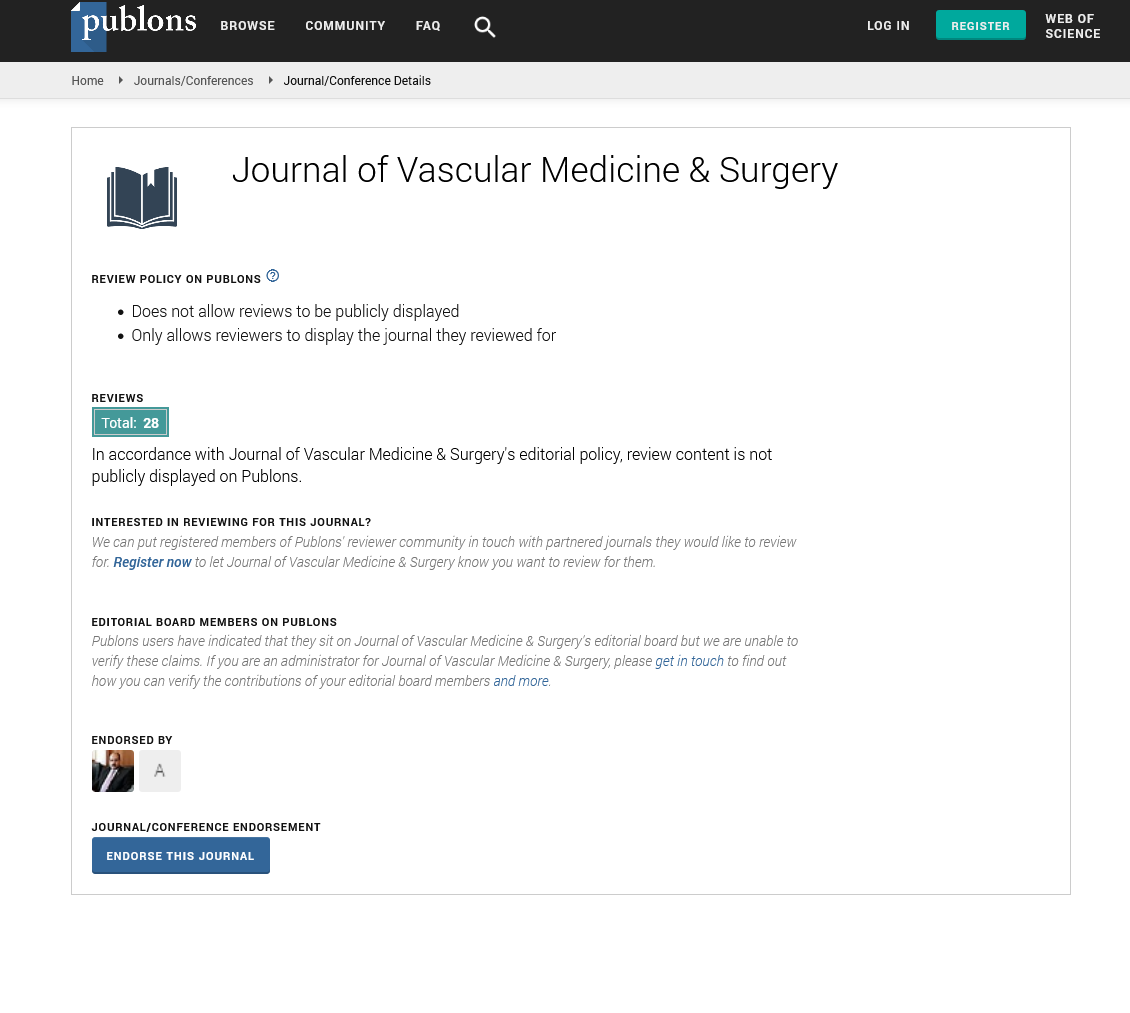Indexed In
- Open J Gate
- Academic Keys
- RefSeek
- Hamdard University
- EBSCO A-Z
- OCLC- WorldCat
- Publons
- Euro Pub
- Google Scholar
- SHERPA ROMEO
Useful Links
Share This Page
Journal Flyer

Open Access Journals
- Agri and Aquaculture
- Biochemistry
- Bioinformatics & Systems Biology
- Business & Management
- Chemistry
- Clinical Sciences
- Engineering
- Food & Nutrition
- General Science
- Genetics & Molecular Biology
- Immunology & Microbiology
- Medical Sciences
- Neuroscience & Psychology
- Nursing & Health Care
- Pharmaceutical Sciences
Opinion Article - (2023) Volume 0, Issue 0
Risk of Sudden Cardiac Arrest and its Mechanism
Stephanie Michael*Received: 02-Feb-2023, Manuscript No. JVMS-23-20213; Editor assigned: 06-Feb-2023, Pre QC No. JVMS-23-20213 (PQ); Reviewed: 20-Feb-2023, QC No. JVMS-23-20213; Revised: 27-Feb-2023, Manuscript No. JVMS-23-20213 (R); Published: 09-Mar-2023, DOI: 10.35248/2329-6925.23.S14.503
Description
When the heart stops beating, this is referred to as cardiopulmonary arrest. It is a medical emergency that cannot be treated immediately, which will result in cardiac death within minutes. It is known as sudden cardiac arrest when it occurs suddenly Until further treatment is provided, Cardio-Pulmonary Resuscitation (CPR) and possibly defibrillation is required. Cardiac arrest causes a sudden loss of consciousness, and breathing can be irregular or absent. While cardiac arrest can be caused by a heart attack or heart failure, these two are different and non-cardiac causes account for 15% to 25% of case scenarios. Before cardiac arrest occurs, some people may experience chest pain, breathing difficulties, stomach pain, an elevated heart rate, and a light-headed feeling.
A fundamental heart condition, such as coronary artery disease, which reduces the amount of blood and oxygen supplying the heart muscle, it is the most common cause of cardiac arrest. This damages the muscle's structure, which can significantly change its function. These changes can potentially lead to Ventricular Fibrillation (V-fib), which is the most common precondition to cardiac arrest. Less common causes include significant blood loss, an oxygen deficiency, extremely low potassium, electrical injury, heart failure, inherited heart arrhythmias, and physically demanding activity. The inability to find a pulse is used to diagnose cardiac arrest.
Symptoms of cardiac arrest
There may be no symptoms at all in some cases of cardiac arrest. Due to cardiac arrest, patients may experience the following symptoms: Chronic, light-headedness, breathing difficulty, cardiac pain, difficulty swallowing, palpitations in the heart (fast or pounding heart beat), and consciousness loss. The symptoms of cardiac arrest can be life threatening.
Causes of cardiac arrest
Myocardial infarction can occur as a result of a heart condition or suddenly. There are three major causes of cardiac arrest.
Arrhythmia and ventricular fibrillation: Arrhythmia occurs when electrical signals in the heart malfunction, causing an abnormal heart rhythm. Ventricular fibrillation is the most common cause of cardiopulmonary arrest and it is a type of atrial fibrillation. Ventricular fibrillation is characterized by a rapid heart rate in the ventricle of the heart, causing the heart to tremble it eventually increasing blood flow.
Enlarged heart (cardiomyopathy): The heart muscle increases blood flow or increases in size, resulting in abnormal myocardial contraction.
Coronary artery disease: This kind of cardiovascular disease occurs when the coronary arteries became more reduced and thickened because of plaque build-up, restricting the flow of blood to the heart. If untreated, coronary artery disease can cause heart failure or arrhythmias, both can result in cardiopulmonary arrest.
Risk factors of cardiac arrest
Sudden Cardiac Arrest (SCA) risk factors are similar to those associated with coronary artery disease and also include age, tobacco consumption, high blood pressure, high blood cholesterol, insufficient physical activity, overweight, diabetes, and a family medical history of cardiac disease. A statistical analysis of these risk factors found that approximately 50% of all myocardial infarctions occur in the 10% of the population assumed to be most at risk due to the overall injury of multiple risk factors, demonstrating that the combined risk of differential diagnoses. Major cardiovascular events, such as Non-Sustained Ventricular Tachycardia (NSVT), syncope, and Left Ventricular Hypertrophy (LVT), have been demonstrated to increase the risk of developing children to sudden cardiac death. Functional changes in the heart, such as decreased ejection fraction or cardiac failure, have been demonstrated to increase the risk of respiratory arrest independently. These functional changes can be obtained as a result of a cardiac injury or accumulated through a family history of arrhythmogenic disorders.
Citation: Michael S (2023) Risk of Sudden Cardiac Arrest and its Mechanism. J Vasc Surg. S14:503.
Copyright: © 2023 Michael S. This is an open access article distributed under the terms of the Creative Commons Attribution License, which permits unrestricted use, distribution, and reproduction in any medium, provided the original author and source are credited.

